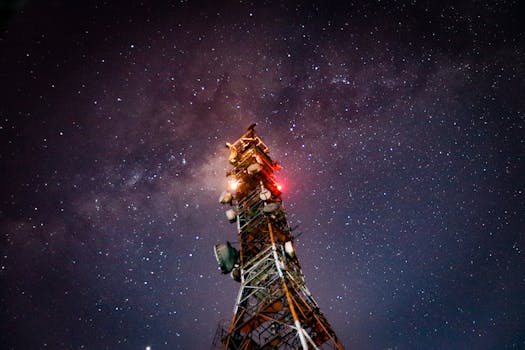Starlink: Revolutionizing Global Internet Connectivity with Satellite Technology

Starlink: Revolutionizing Global Internet Connectivity with Satellite Technology
Starlink is a satellite constellation developed by SpaceX, a private aerospace manufacturer and space transport services company founded by Elon Musk. The project aims to provide high-speed, low-latency internet connectivity across the globe, bridging the digital divide and transforming the way we communicate. With its innovative technology and ambitious goals, Starlink is set to revolutionize the way we access the internet, making it faster, more reliable, and more accessible to people around the world.
How Starlink Works
Starlink uses a constellation of low-Earth orbit (LEO) satellites to provide internet connectivity. The satellites are launched into space using SpaceX’s Falcon 9 rocket and are designed to orbit the Earth at an altitude of around 550 kilometers. Each satellite is equipped with a number of antennas that communicate with user terminals on the ground, which are small, dish-like devices that can be installed at homes, schools, or businesses.
The user terminals use the Ka and Ku frequency bands to communicate with the satellites, which then relay the data to a network of ground stations around the world. The ground stations are connected to the global internet backbone, allowing users to access the internet at speeds of up to 1 Gbps. The latency of the Starlink network is expected to be around 20-30 milliseconds, which is comparable to traditional fiber-optic internet services.
Benefits of Starlink
Starlink has the potential to provide a number of benefits to users, including faster and more reliable internet connectivity, increased access to the internet in remote and underserved areas, and lower costs compared to traditional internet services. The network is also designed to be highly resilient and resistant to outages, as the satellites can reroute traffic in the event of a failure.
One of the key advantages of Starlink is its ability to provide internet connectivity in areas where traditional infrastructure is lacking. In many parts of the world, the cost of deploying fiber-optic cables or cellular networks is prohibitively expensive, leaving many communities without access to the internet. Starlink can help to bridge this digital divide, providing people with access to the internet and all the opportunities it brings.
Challenges and Controversies
Despite the potential benefits of Starlink, there are also a number of challenges and controversies surrounding the project. One of the main concerns is the potential for the satellites to contribute to space debris, which can pose a risk to other satellites and spacecraft in orbit. There are also concerns about the impact of the satellites on astronomy, as the bright lights of the satellites can interfere with observations of the night sky.
Additionally, there are regulatory challenges that need to be addressed, as the deployment of a large constellation of satellites requires coordination with governments and other stakeholders around the world. SpaceX has been working with regulatory agencies to ensure that the Starlink network complies with all relevant laws and regulations, but there are still many uncertainties and challenges to be overcome.
Conclusion
In conclusion, Starlink is a revolutionary technology that has the potential to transform the way we access the internet. With its high-speed, low-latency connectivity and global reach, Starlink can provide people around the world with fast and reliable internet connectivity, bridging the digital divide and opening up new opportunities for education, commerce, and communication. While there are challenges and controversies surrounding the project, the benefits of Starlink make it an exciting and important development in the field of satellite technology.

